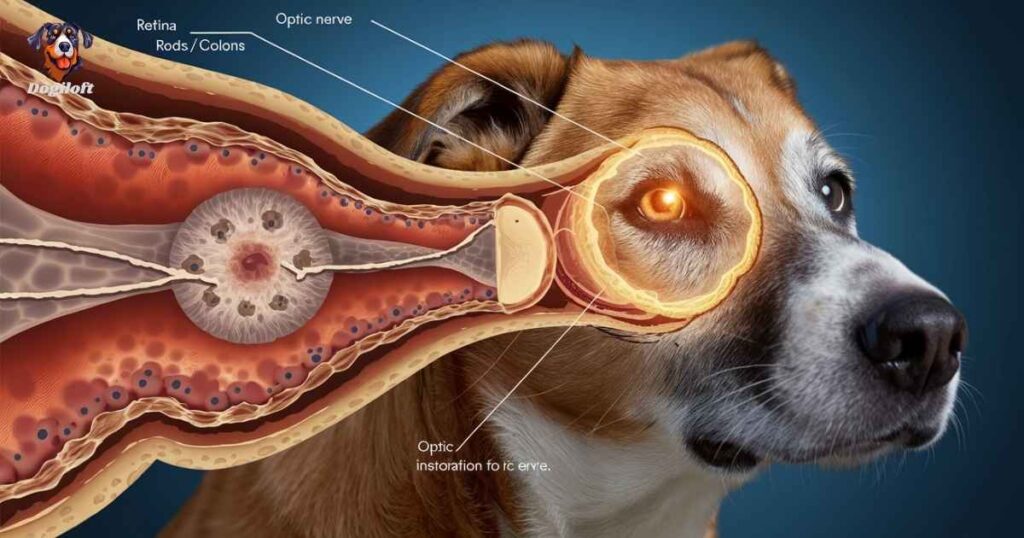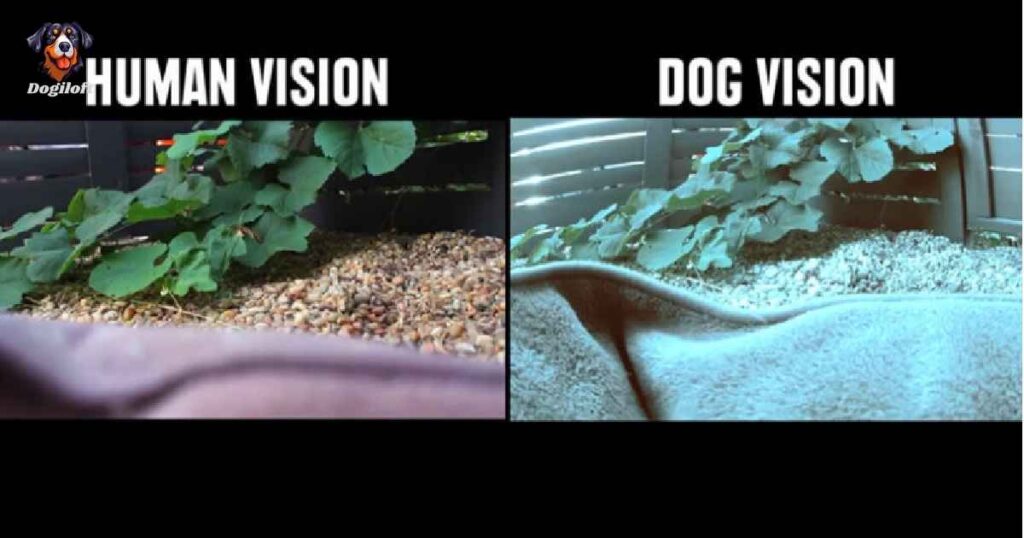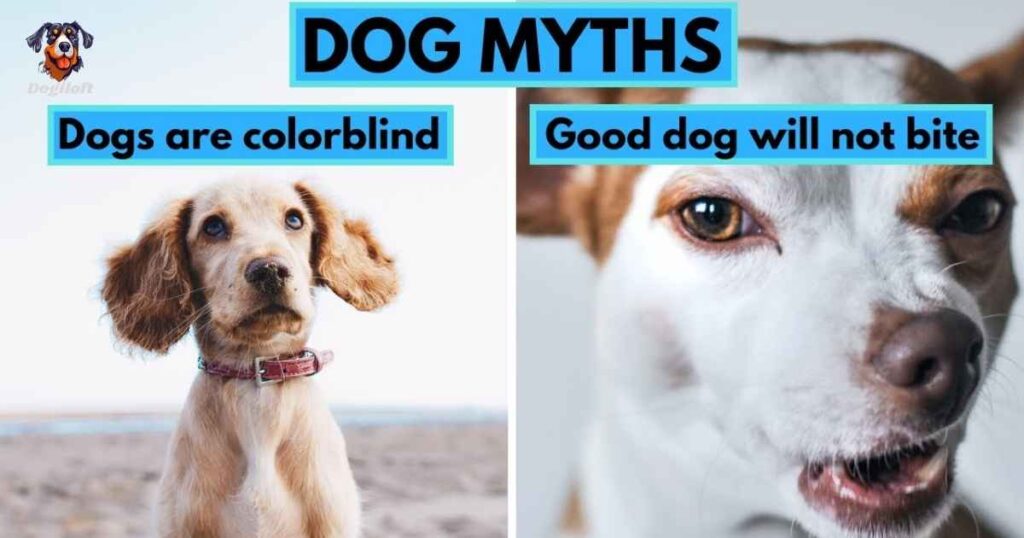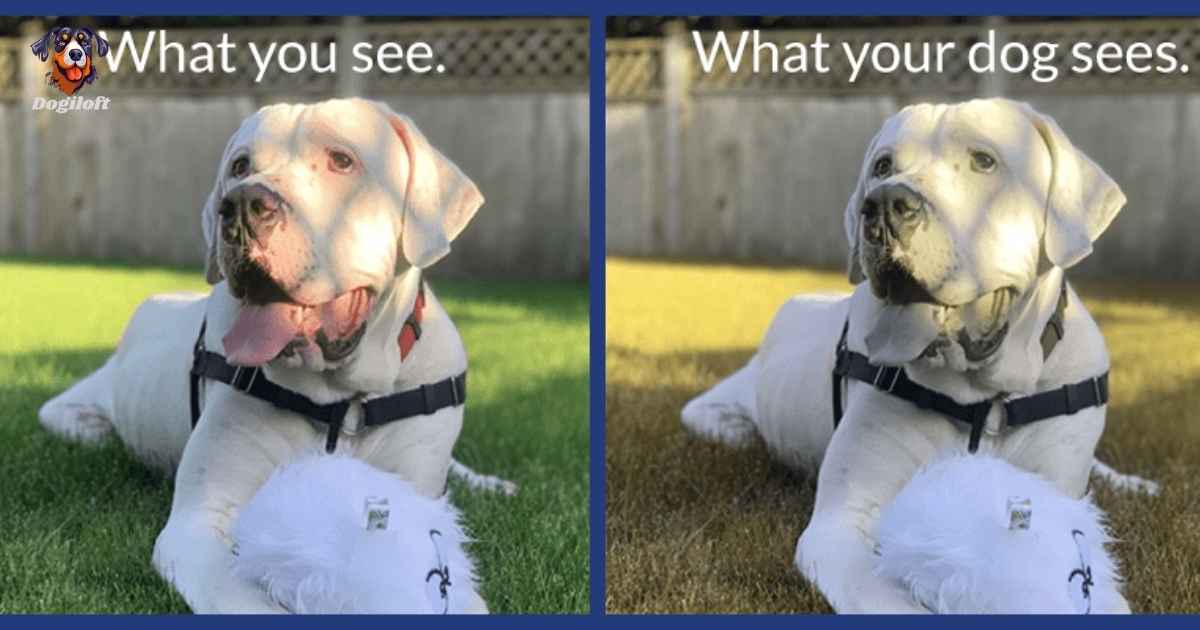Dogs see the world differently than humans. Unlike us, they do not see the full spectrum of colors. Their vision is limited to certain hues. Understanding what colors dogs see helps us better understand their behavior and needs.
Have you ever wondered how your dog perceives its favorite toy? Colors do dogs see may surprise you! Dogs are not colorblind as once thought. However, their vision is similar to a human with red-green color blindness. They mainly see shades of blue and yellow.
Research shows dogs rely more on brightness and contrast than color. Knowing this can help in choosing toys or training tools. By understanding their vision, you can improve how you communicate with your furry friend.
Human vs. Dog Vision
Humans see a wide range of colors with great clarity. Dogs, however, see fewer colors, mainly shades of blue and yellow. This difference comes from variations in the eye’s structure. Dogs have fewer color-detecting cells than humans do. This means their vision is simpler when it comes to colors.
So, what colors do dogs see compared to humans? Dogs see less detail and fewer vibrant colors. They rely on brightness and motion more than color. Humans see red and green, but dogs cannot distinguish them. Their world is less colorful but still bright and functional.
The Science Behind Canine Vision

Dogs experience the world differently because their eyes are built uniquely. Their retinas contain more rod cells than cone cells. Rod cells are specialized for detecting motion and seeing in dim light. This means dogs can see well at night, much better than humans.
But what colors do dogs see? Unlike humans, dogs have fewer cone cells, limiting their ability to see colors. While humans see a full spectrum, dogs see primarily blue and yellow hues. Red and green appear as shades of gray or brown. Their vision works perfectly for their needs, helping them detect movement and navigate their environment effectively. All About Australian Labradoodles can also offer insights into how these adorable dogs, known for their intelligence and friendly nature, rely on their keen vision in their everyday activities.”
How Dogs See at Night?
Dogs have excellent night vision thanks to their eye structure. Their retinas have more rod cells, which detect light in dim settings. This allows dogs to see better in the dark than humans. They also have a reflective layer in their eyes called the tapetum lucidum.
This layer reflects light back through the retina, enhancing low-light vision. It’s why dogs’ eyes often glow in the dark. While they don’t see in complete darkness, they need far less light than humans. This ability helps dogs navigate and stay alert at night.
What Colors Can Dogs See Best?
| Color | Can Dogs See It Well? | Explanation |
| Blue | Yes | Dogs perceive blue tones clearly due to specialized cone cells. |
| Yellow | Yes | Yellow is another color dogs see distinctly, appearing bright and clear. |
| Green | No | Dogs see green as a grayish shade due to their limited color spectrum. |
| Red | No | Red appears dark or grayish because dogs lack red-sensitive cone cells. |
| Purple | Partially | Purple may appear blue to dogs due to their sensitivity to blue hues. |
Dogs see blue and yellow best, making toys or items in these colors more noticeable.
Key Facts About Dog Color Perception:
1. Dogs See a Limited Color Range
Unlike humans, dogs see primarily blue and yellow tones.
2. Red and Green Are Grayish
Dogs can’t distinguish red and green, seeing them as shades of gray or brown.
3. Dogs Are Not Colorblind
While their color perception is limited, dogs still see some hues clearly.
4. Blue and Yellow Stand Out Most
These colors are the easiest for dogs to recognize and focus on.
5. Vision Prioritizes Motion and Brightness
Dogs rely more on detecting movement and brightness than identifying colors.
6. Adapted for Low-Light Environments
Their vision is tailored for dim conditions, compensating for limited color depth.
What Does Dog Vision Look Like?

Dog vision is different from human vision in many ways. Dogs see fewer colors because their eyes have fewer cone cells. They primarily see shades of blue and yellow. Colors like red and green appear as gray or brown.
Here’s the paragraph with the keyword “Dogs Eye Vision Different Then Humans” added in the proper place:
“Dogs also see less detail compared to humans. Their vision is slightly blurry, but they excel at detecting motion. Dogs’ eye vision is different than humans, as they perceive fewer colors. What colors do dogs see best? Blue and yellow stand out most in their world. This unique vision helps them adapt to their surroundings effectively.”
Does Breed Affect Dog Vision?
Yes, a dog’s breed can affect its vision. Some breeds have better sight than others, depending on their genetics. For example, hunting breeds like Border Collies often have sharp vision to track movement.
However, what colors do dogs see is not influenced by breed. All dogs see primarily blue and yellow, regardless of their type. While some breeds may have better night vision or detect motion faster, their color vision remains the same. Genetics may also affect how well a dog sees in different light conditions.
Myths About Dogs and Their Vision

There are several myths about dogs and their vision that aren’t true. One common myth is that dogs are completely colorblind. In reality, dogs see colors, but only blue and yellow hues. Red and green appear as gray to them.
Another myth is that dogs can’t see details. While their vision is not as sharp as humans, they can detect motion well. Dogs also have better night vision due to their eye structure. Understanding these facts helps clarify what colors do dogs see and how their vision works in different environments.
So, Can Dogs See Colors Like We Can?
No, dogs cannot see colors the way humans do. While humans can see a wide range of colors, dogs see a more limited spectrum. They primarily see shades of blue and yellow. Colors like red and green appear grayish to dogs.
What colors do dogs see best? Blue and yellow are the easiest for them to distinguish. Although dogs’ color vision is not as vibrant as ours, they rely more on brightness and motion to navigate their world. So, while their color perception is different, it is perfectly suited to their needs.
FAQ’s
Can Dogs See Pink?
No, dogs cannot see pink. Pink appears as a shade of gray or a dull color to them since they primarily see blue and yellow tones.
What Color Makes Dogs Happy?
While there is no definitive color that makes dogs happy, they are most attracted to colors they can see clearly, like blue and yellow. Toys or items in these colors may catch their attention and encourage play.
What Colors Do Dogs Avoid?
Dogs tend to avoid colors that are difficult for them to distinguish, like red and green. Since these colors appear grayish or dull to them, they are less likely to show interest in items in those shades.
Conclusion
in conclusion, understanding what colors dogs see can help us better connect with our pets. While dogs don’t see the full spectrum of colors like humans, they can clearly distinguish shades of blue and yellow. Colors like red and green appear grayish to dogs, making them less noticeable. This unique color perception doesn’t interfere with their ability to interact with the world.
Knowing the colors dogs see can help us choose toys or tools that grab their attention. By selecting items in colors like blue and yellow, we can make their environment more engaging. So, while their color perception differs from ours, what colors dogs see suits their needs perfectly.








